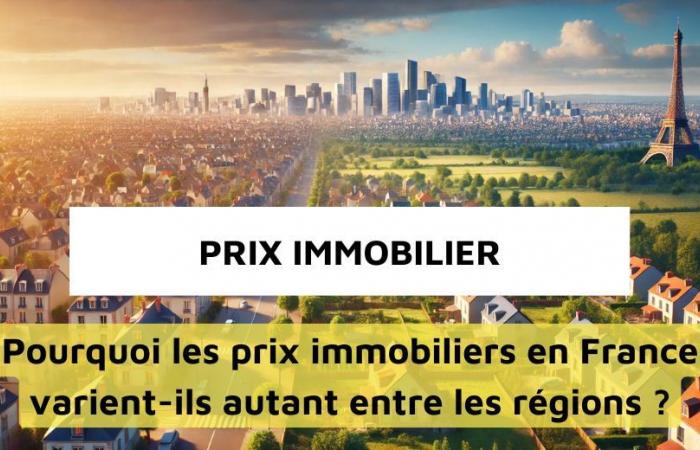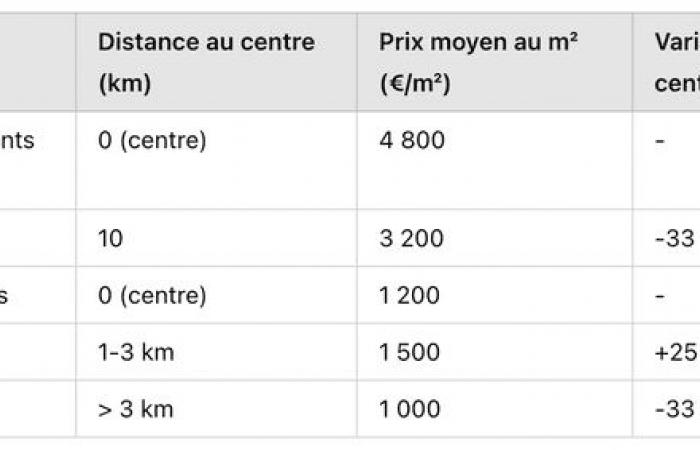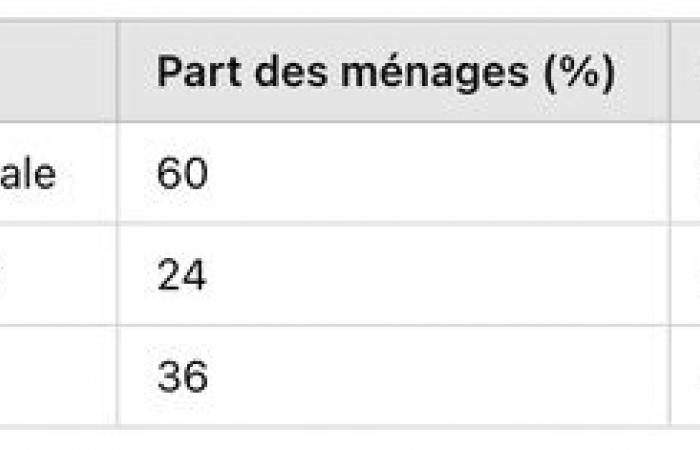Real estate prices in France are marked by growing disparities, as revealed by a recent INSEE study. This in-depth analysis highlights the existing gaps between rural, urban and tourist areas. In addition, it examines the impact of various factors, including demographic density and local attractiveness. Between 2020 and 2022, these differences have widened, making access to property increasingly difficult for many households. Building on this study, this article explores the main dynamics influencing the French real estate market, and their repercussions on buyers and investors.
Summary :
Real estate price differences in France between rural, urban and tourist areas
The INSEE study highlights growing disparities in property prices in France. In rural areas, prices remain low. This is the case in Creuse, Haute-Marne and Indre, where the median price of an old house does not exceed €1,000/m². This accessibility can be explained by a market marked by low demand and a loss of economic attractiveness. Young households often leave these territories for regions offering more jobs and services.
AAV : Area of attraction of cities, defined by INSEE, bringing together an urban center and its surrounding economically linked municipalities.
On the other hand, prices are exploding in big cities. In Paris, the median price of apartments exceeds €8,000/m², while in Lyon it reaches €5,000/m². In the Alpes-Maritimes, tourism and proximity to the sea also push prices up. In Val-d'Isère, for example, apartments sell at a median price of €11,400/m². These gaps reflect a growing geographic divide, where certain areas become inaccessible for the majority of households.
In tourist areas, the market is particularly tight due to the strong demand for second homes. In the Var, a third of houses have swimming pools, which increases their median price from €3,640 to €4,230/m². These data reflect the importance of local amenities in real estate valuation.
The impact of local dynamics on real estate prices in France
Indeed, local dynamics play a determining role in price disparities. INSEE observes that in large urban areas of more than 700,000 inhabitants, houses close to city centers are twice as expensive as those located on the outskirts.
In Paris, a house in the central area costs on average €5,140/m² compared to €3,180/m² in the crown. This gap is explained by the proximity of jobs, infrastructure and services.
However, this phenomenon is reversed in small towns. In AAVs with less than 50,000 inhabitants, the most expensive houses are often located between 1 and 3 km from the center, where they offer a better balance between quality of life and accessibility. These peripheral areas attract households looking for a pleasant living environment while remaining a reasonable distance from local economic activities.
Accessibility to property: a growing issue
Since 2000, prices of old housing have increased 2.6 times. In addition, this dizzying increase is accompanied by stagnation in income. Which accentuates the difficulties for first-time buyers. According to INSEE, 10% of houses are sold at a price below €850/m², while 10% reach more than €4,360/m². These figures illustrate a growing gap between the most affordable housing and the most expensive properties.
The increase in interest rates since 2022 has further complicated access to property. For an average household, borrowing capacity has decreased by almost 20%which restricts their real estate choice. As a result, the number of real estate transactions has seen a notable decline, particularly among first-time buyers.

Structuring factors of real estate prices in France: density, tourism and housing supply
Demographic density and development of urban centers
Large metropolises concentrate the majority of jobs and infrastructure, which fuels the rise in prices. In Île-de-France, for example, high prices reflect demand exceeding supply. In addition, the objective of “zero net artificialization”, aimed at limiting urban sprawl, could exacerbate this tension.
Tourism and second homes
Tourist areas such as the Côte d'Azur, the Alps and certain coastal towns are seeing their prices explode. Indeed, tourism leads to a sustained demand for second homes, making access to housing difficult for local populations.
Availability of accommodation
In rural areas, land is abundant, but low demand slows construction. Conversely, in metropolises, the scarcity of land and administrative restrictions limit the supply of housing, accentuating the rise in prices.
Perspectives and solutions for a balanced real estate market
Faced with these challenges, several avenues can be considered:
- Promote affordable housing in stressed areas. The development of social or intermediate housing could meet the growing demand in large cities.
- Supervise second homes in tourist areas. Stricter regulation on the purchase of second homes could reduce pressure on prices. As has been implemented in certain regions of Switzerland.
- Revitalize rural areas. Investing in infrastructure and the economic attractiveness of rural areas could better balance the distribution of the population and reduce price gaps.
- Relieving constraints on construction in urban areas. A simplification of administrative procedures for the construction of housing in metropolises could stimulate supply and stabilize prices.
Conclusion
The growing disparities in property prices in France reflect complex local dynamics, combining urban density, tourism and land availability. While rural areas struggle to attract new residents, large cities and tourist regions are becoming increasingly inaccessible. Targeted public policies are necessary to promote a more balanced market and guarantee access to property for all.








